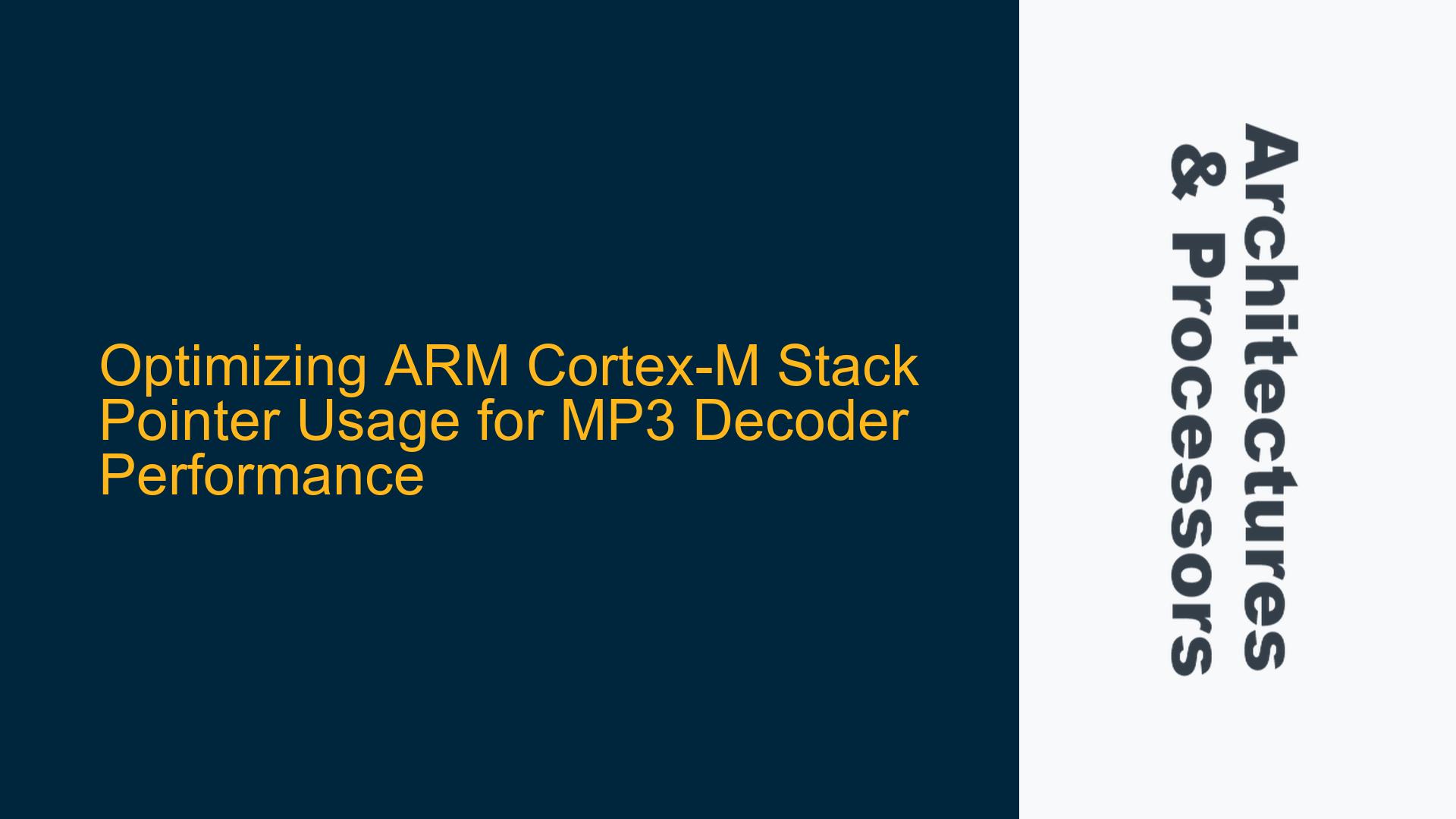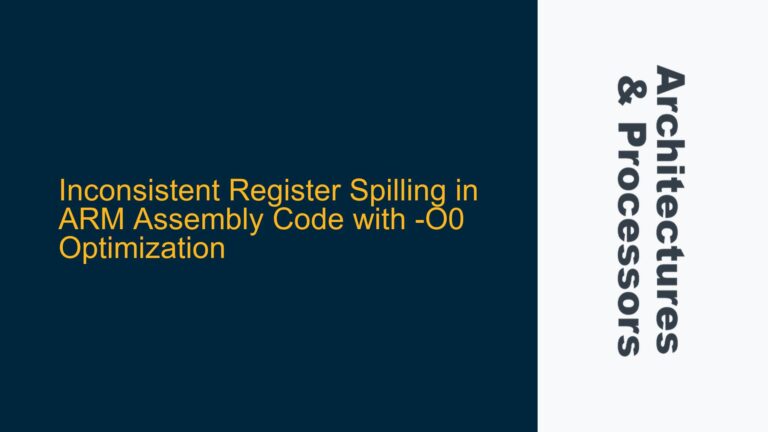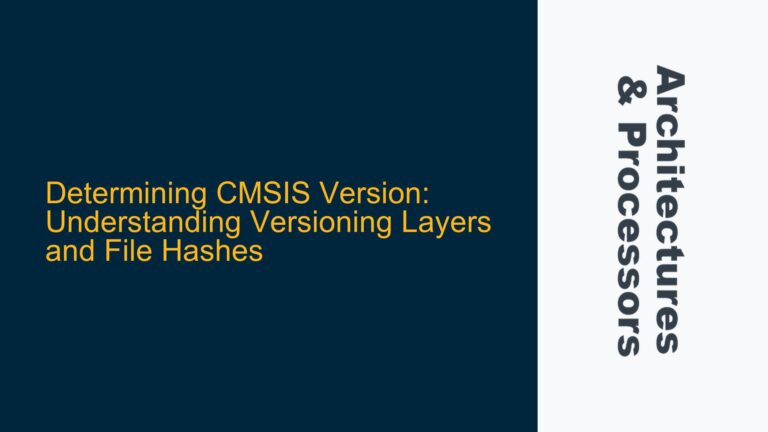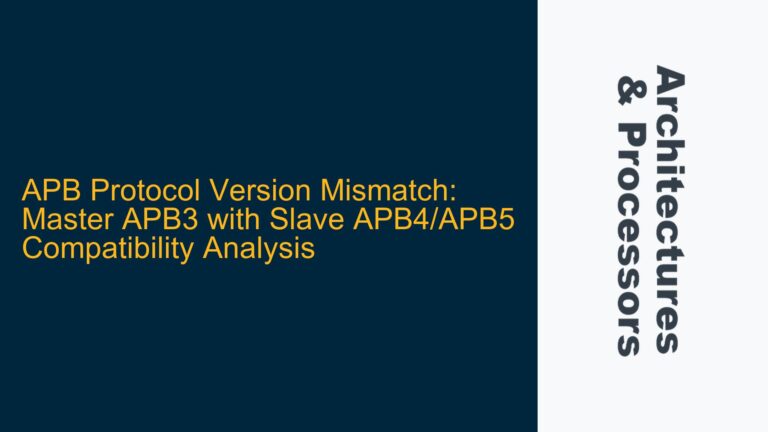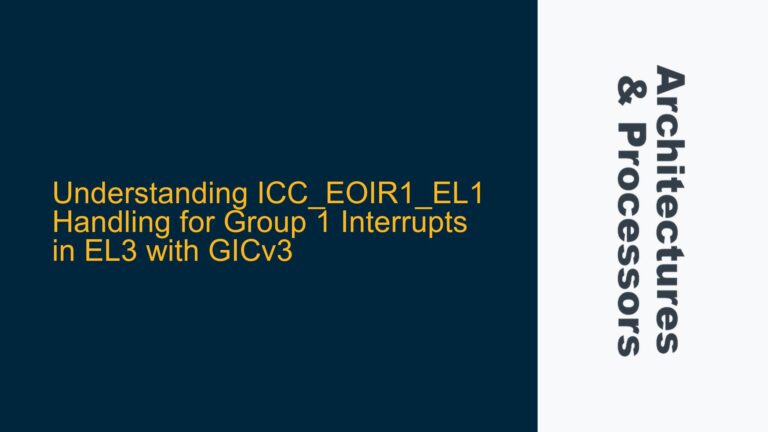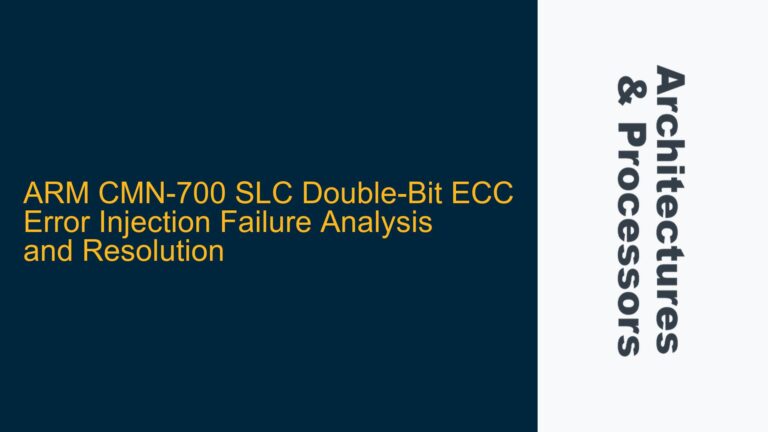ARM Cortex-M MSP and PSP Configuration for High-Performance MP3 Decoding
In ARM Cortex-M processors, the stack pointer (SP) is a critical component for managing function calls, local variables, and interrupt handling. The Cortex-M architecture provides two stack pointers: the Main Stack Pointer (MSP) and the Process Stack Pointer (PSP). The MSP is typically used by the operating system or the kernel for handling exceptions and interrupts, while the PSP is intended for application tasks. Understanding how to configure and utilize these stack pointers effectively is essential for optimizing performance in resource-constrained embedded systems, such as those running MP3 decoders.
The primary challenge arises when the application requires high-performance data processing, such as in an MP3 decoder, where the stack pointer is frequently accessed for memory operations. In such cases, using the PSP for application tasks can provide performance benefits, as it allows the MSP to remain dedicated to handling exceptions and interrupts. However, improper configuration or misuse of the stack pointers can lead to increased interrupt latency, stack corruption, or inefficient memory usage.
The Cortex-M architecture allows the processor to switch between the MSP and PSP dynamically. This flexibility is particularly useful in systems where both high-performance application code and low-latency interrupt handling are required. By default, the Cortex-M processor uses the MSP during boot-up and for handling exceptions. However, the application can switch to the PSP for task execution, ensuring that the MSP remains available for interrupt handling.
In the context of an MP3 decoder, the PSP can be leveraged to optimize memory access patterns, particularly when using post-increment addressing modes. This approach minimizes the overhead associated with stack pointer manipulation, allowing for faster execution of inner loops. However, care must be taken to ensure that interrupts are handled correctly, as the MSP must be used during exception handling to maintain system stability.
Misconfigured Stack Pointer Usage and Interrupt Latency Trade-offs
One of the most common issues when using the PSP for high-performance applications is the potential for increased interrupt latency. If the application code running on the PSP disables interrupts to ensure atomic access to shared resources, the system may experience delays in responding to time-critical events. This trade-off between performance and interrupt latency must be carefully managed, particularly in real-time systems such as audio decoders.
Another potential cause of issues is the improper initialization of the stack pointers. During system boot, the Cortex-M processor initializes the MSP to a predefined value, typically located at the beginning of the memory map. If the PSP is not correctly initialized before switching to it, the application may encounter stack corruption or undefined behavior. This is especially critical in systems where memory resources are limited, as stack overflows can lead to catastrophic failures.
Additionally, the use of the PSP for high-performance tasks may expose subtle hardware-software interaction issues. For example, if the application code modifies the PSP while an interrupt is pending, the processor may switch to the MSP during exception handling, leading to inconsistent stack pointer values. This can result in data corruption or incorrect program behavior. Proper synchronization mechanisms, such as memory barriers or critical sections, must be employed to ensure that stack pointer modifications are atomic and do not interfere with interrupt handling.
The Thumb instruction set, used by Cortex-M processors, introduces additional complexity due to its compact encoding and limited addressing modes. While this reduces code size and improves performance, it also requires careful consideration of stack pointer usage. For example, the post-increment addressing mode, which is often used to optimize memory access, may not be directly applicable to the stack pointer in all cases. Understanding the nuances of the Thumb instruction set is essential for maximizing performance while avoiding pitfalls related to stack pointer manipulation.
Implementing Stack Pointer Switching and Interrupt Handling Best Practices
To address the challenges associated with using the PSP for high-performance MP3 decoding, a systematic approach to stack pointer management and interrupt handling is required. The following steps outline best practices for configuring and utilizing the MSP and PSP in Cortex-M processors:
First, ensure that the MSP and PSP are correctly initialized during system boot. The MSP should be set to the base address of the main stack, typically located in the system’s memory map. The PSP should be initialized to a separate memory region dedicated to the application stack. This separation ensures that the MSP remains available for exception handling, while the PSP can be used for task execution.
Next, implement a controlled switch from the MSP to the PSP for application tasks. This can be achieved by modifying the CONTROL register, which governs the processor’s stack pointer selection. Before switching to the PSP, ensure that interrupts are disabled to prevent context switches during the transition. Once the PSP is active, interrupts can be re-enabled, allowing the system to handle exceptions using the MSP.
To minimize interrupt latency, avoid disabling interrupts for extended periods during PSP usage. Instead, use critical sections or atomic operations to protect shared resources. This approach ensures that the system remains responsive to time-critical events while maintaining the performance benefits of PSP usage.
When using the PSP for high-performance tasks, such as MP3 decoding, leverage the Thumb instruction set’s addressing modes to optimize memory access. For example, the post-increment addressing mode can be used to efficiently load or store multiple data items from the stack. However, ensure that these operations do not interfere with interrupt handling by using memory barriers or other synchronization mechanisms.
Finally, implement robust error handling and debugging mechanisms to detect and resolve stack-related issues. This includes monitoring stack usage to prevent overflows, validating stack pointer values during context switches, and using hardware features such as the Memory Protection Unit (MPU) to enforce memory access rules. By following these best practices, developers can achieve optimal performance and reliability in Cortex-M-based systems.
In conclusion, the effective use of the MSP and PSP in ARM Cortex-M processors requires a deep understanding of the architecture’s stack pointer management and interrupt handling mechanisms. By carefully configuring the stack pointers, minimizing interrupt latency, and leveraging the Thumb instruction set’s capabilities, developers can optimize performance in demanding applications such as MP3 decoding. Proper initialization, synchronization, and error handling are essential for ensuring system stability and reliability.
